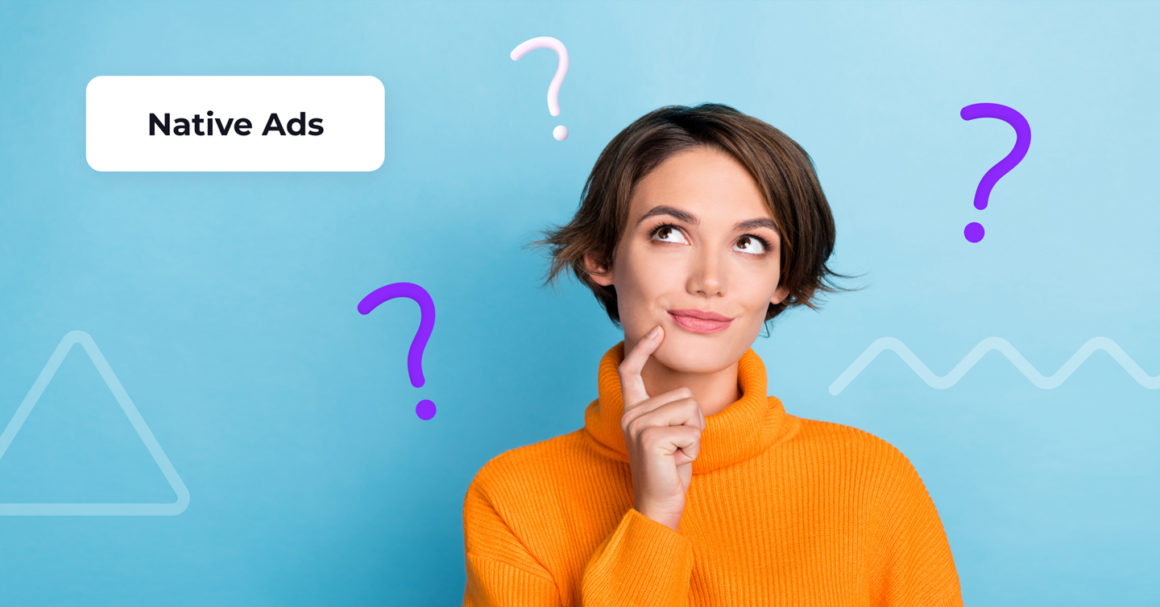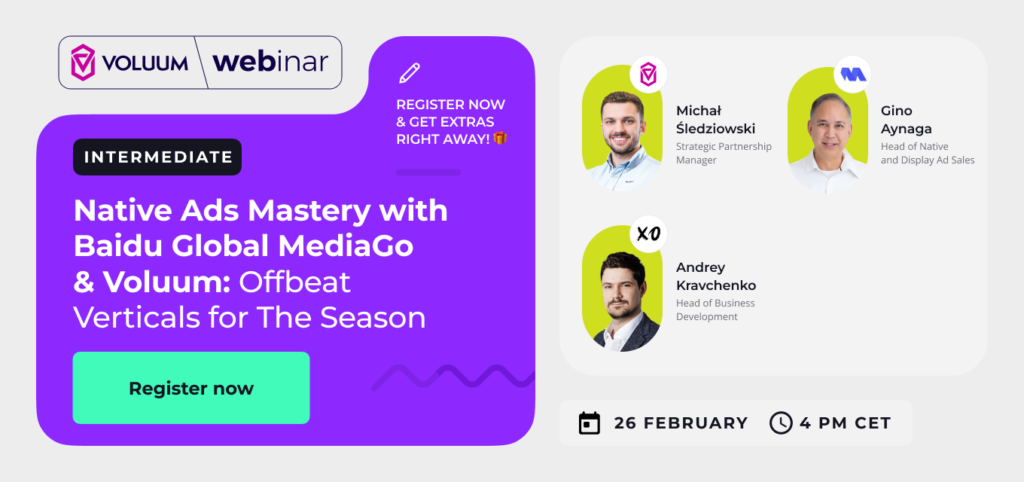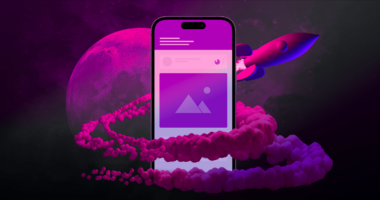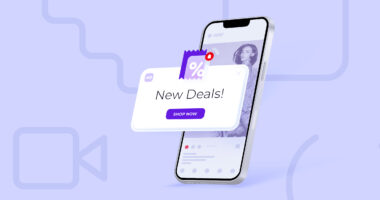Native advertising is one of the hottest buzzwords today. Why is it so popular? Simple.
Native ads are viewed as a cure for a lot of what ails the online advertising industry.
For instance, they help advertisers, publishers, and audiences avoid the problem of banner blindness. Unlike banner ads which are typically ignored by visitors, native ads do not look like traditional advertisements and in fact, receive greater attention from consumers.
Based on the research, website visitors look at native ads 53% more frequently than display ads.
And, there are many more benefits that you may not be aware of.
In this article we will dispel all your doubts and answer the most common questions about native advertising. How it’s done, why you should do it and much more. Let’s go!
What is Native Advertising?
Native advertising is a type of paid media, where the ad experience follows the natural form and function of the user experience in which it is placed. Such ads are so cohesive with the organic content, and so consistent with the given platform’s behavior and design that the viewer feels the ad belongs there.
You’ve probably seen one of these sneaky ads come up without realizing it, while online shopping or reading articles on your favorite websites.

What is the Difference between Native Advertising and Content Marketing?
Many in the online advertising industry are confused by the difference between native advertising and content marketing (also known as branded content). Sometimes, the terms are even used interchangeably.
While both strategies have the same objective which is promoting products and services without being too pushy or “salesy”, there is a significant difference in approach, cost, and delivery.
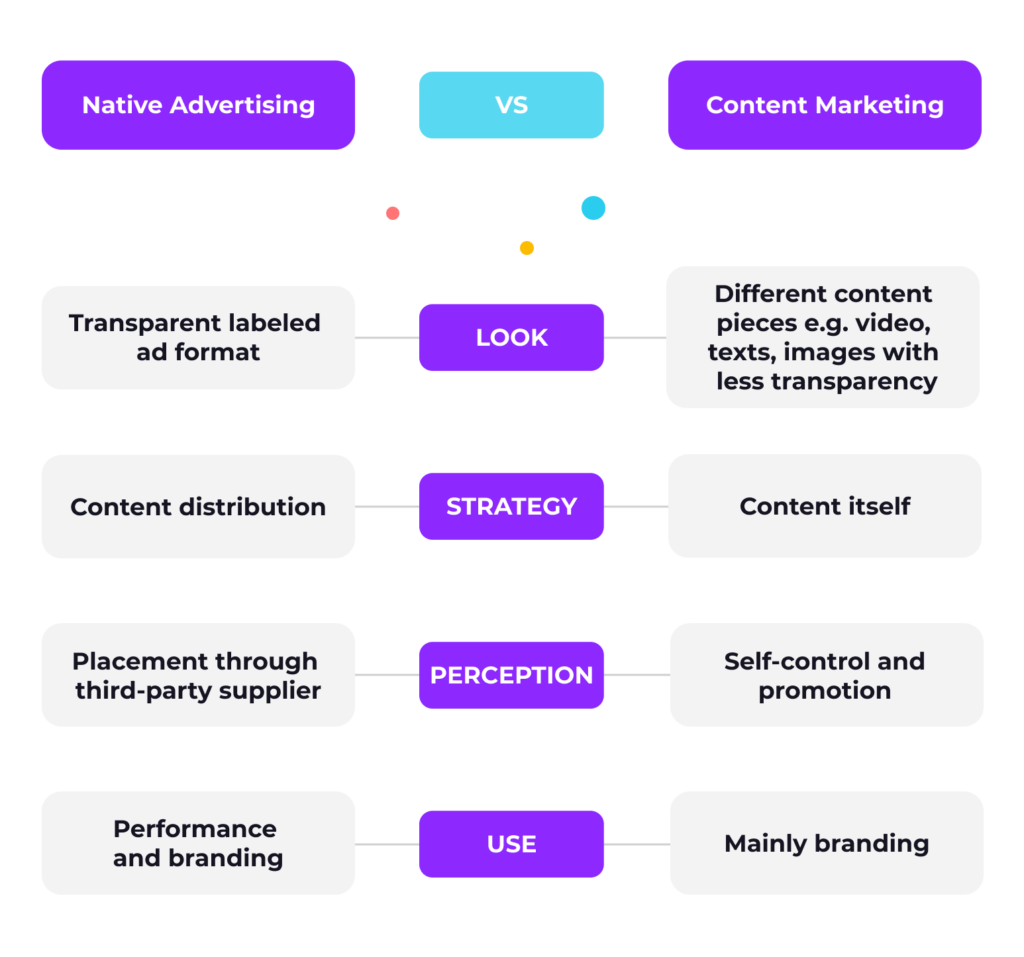
The major distinction is that content marketing aims to build long-term trust, consistently providing value for readers without asking for anything in return. Whereas, in most cases, native advertising strives to convince the reader to make a purchase, right before or after obtaining this valuable content.
To put it in very simple terms, native advertising is more like a date. You get a nice wine, choose a fancy restaurant, or dress up to make a good first impression. On the other hand, content marketing is like a marriage, when all of your efforts become something larger.
Another difference is that content marketing does not incur paid advertising costs, but shifts all expenses towards content production and management. As a result, branded content may need a longer, more persistent campaign to deliver results.
Native advertising is quite the opposite. This format requires a bigger investment in paid advertising fees, however, it not only allows advertisers to reach a larger audience but also does it more quickly.
Not sure which direction you want to take? The good news is that you don’t actually have to choose between the two. Both content marketing and native advertising can play an important role in a complete digital marketing strategy. Combined effectively, they can bring a significant amount of quality content to quality customers.
What are the Benefits of Native Advertising?
A successful native advertising campaign can be extremely beneficial. Here are five of the most important advantages of native ads:
Native Ads are More Trustworthy than Traditional Advertising
Based on a study, nearly 90% of the younger internet audience from Gen Z, Millennials, and Gen X prefer custom content, including native ads, online instead of traditional ads. By using native advertising, marketers are able to present promotional content in a subtle and convincing way that offers valuable and empowering information to online users. As a result, pleased customers reward advertisers for this effort with their trust and loyalty.
Native Ads Drive Millennials to Make Purchases
Millennials are definitely not a group of impulsive, spontaneous shoppers. They crave a story and experience over a statement and spammy, promotional content. Since native ads are delivered within the user’s experience, they do not appear as disruptive or misleading. According to IAB, around 80% of Millennials see in-feed native ads as a favorable user experience and more than 58% believe that publishers should limit advertising to native only.
Native Ads Generate Higher CTRs
Advertisers love native ads, mainly because the click-through rates tend to be much higher than typical advertisements, not to mention that engagement is generally much stronger. According to AppNexus, native ads produce a 8,8 times higher CTR than average display ads. Why? Simply because banner ads interrupt the user flow, whereas native ads are consumed in a way that is natural and intuitive to a viewer’s usual media consumption.
Native Ads are Device Responsive
Native ads sit within the organic content and in fact, they’re consumed in the same way. It’s a huge advantage and time saver as advertisers don’t need to make any platform-specific changes to their ads between mobile and desktop. One ad copy does the job no matter what kind of device a customer is using. It’s super important, especially now when mobile is the name of the game.
And the last thing is, when done right, native ads have a huge potential to go viral. Just like editorial content, native ads tend to have unique URLs and can be easily reposted on social networks or messaging apps.
Based on the research, around 32% of people would share a native ad with a friend or family member while only 19% would do the same with a display ad. It’s a win-win situation for both advertisers and publishers. While advertisers get a greater reach, publishers get more website traffic.
What Budget is Suitable for Native Ads?
There is no definite answer to what amount of money a media buyer should have in his pocket to start a campaign on a native ad network. But one thing is certain – you need to invest some cash (at least $500-1000) to learn and get the data first.
It’s simple: the bigger your budget, the more tests you can run with your native advertising campaign. And the better ads you have, the more quality traffic you attract.
The flipside to this is that a smaller budget decreases the chances of succeeding. Moreover, a small budget combined with a lack of experience can even lead to а complete disaster. You can both lose all of the money you’ve invested, as well as learn nothing from the whole experience.
What is the Dark Side of Native Advertising?
Well, nothing is perfect. Here are some of the biggest native advertising challenges:
“It Depends”
Native advertising can be a bit overwhelming at times, especially at the very beginning. Which offer has the greatest potential? What is the best native ad network to go with? How much time and money should be spent on testing? So many questions in the air, but not many answers.
Within the digital marketing world, one of the most common answers you will hear is, “It depends”. There are often numerous factors at play, and one solution doesn’t fit all. Practical experience is the key to success.
Time and Effort
A great native ad design requires both time and talent to produce. If advertisers want to succeed, all of their ad elements should truly stand out from the crowd. Believe me, it’s a real game-changer. Without marketing, coding or photoshop skills, creating a high-converting marketing campaign could be a bit of a challenge. Well, it’s possible, but not without motivation, patience, and full commitment.
Quality Matters
On the one hand, native advertising is an opportunity, on the other hand it’s a risk, especially for publishers. As soon as they decide to place native ads on their websites, the traffic may go down, even if the revenue goes up. That’s why publishers must keep an eye on the quality of presented advertisements.
Why? If the ads aren’t good enough, users may become frustrated and annoyed, resulting in declining interest rates.
If you want to learn more about the good, the bad and ugly sides of native advertising check out one of our recent articles and discover all the secrets of this ad format.
What are the Most Popular Native Ad Formats?
Similar to other forms of advertising, native ads have several formats. The most common types are:
In-Feed Ads
In-feed ads are native ad units placed between the editorial content to resemble the website environment and don’t break the user’s flow. They don’t yell campaign slogans at the audience and allow readers to consult them quite naturally. You may have noticed many in-feed ads on Facebook, Twitter, Linkedin, or other social media platforms.
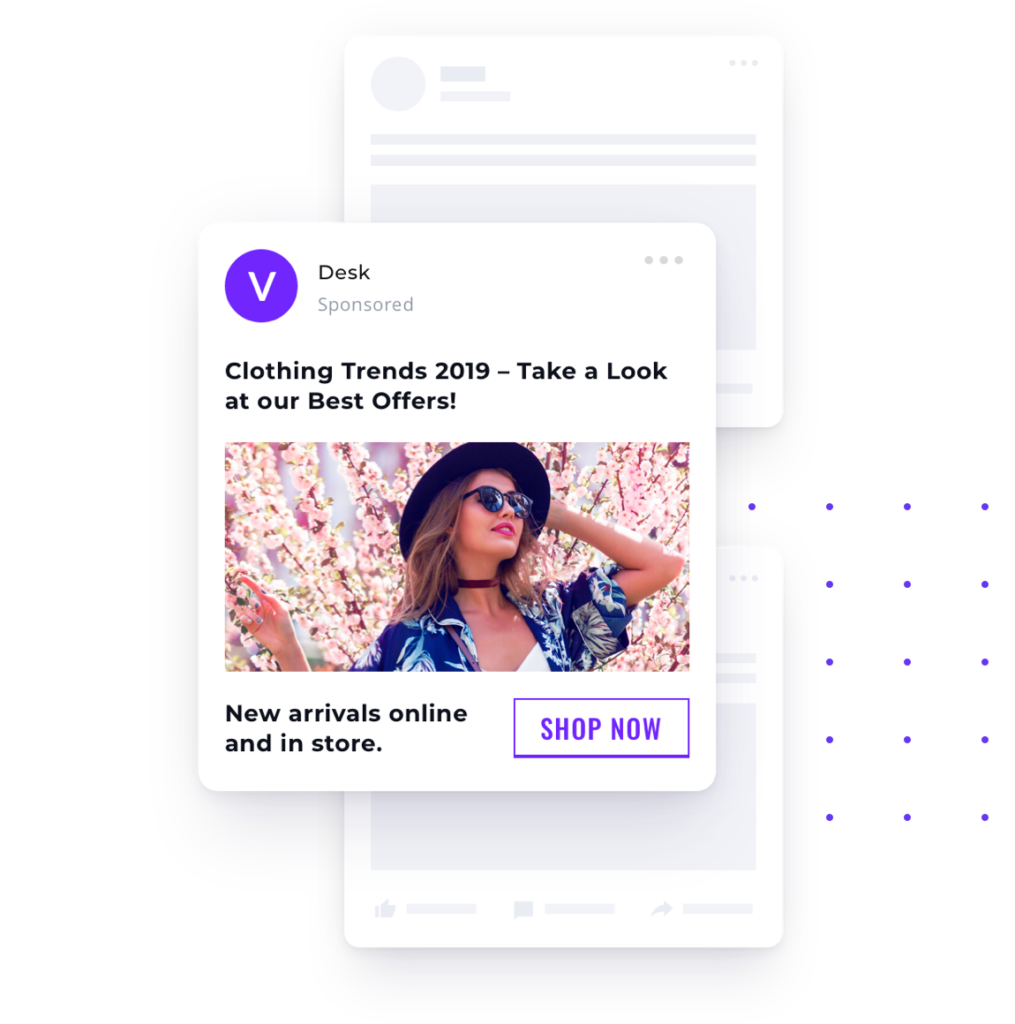
In-App Ads
In-app native ad format makes up an essential part of the app monetization ecosystem. Based on the research, native ads for mobile are likely to be viewed three-times more frequently than banner ads. Such ads blend into the look and feel of the underlying app environment and therefore are perceived as a welcome recommendation, suggestion or idea.
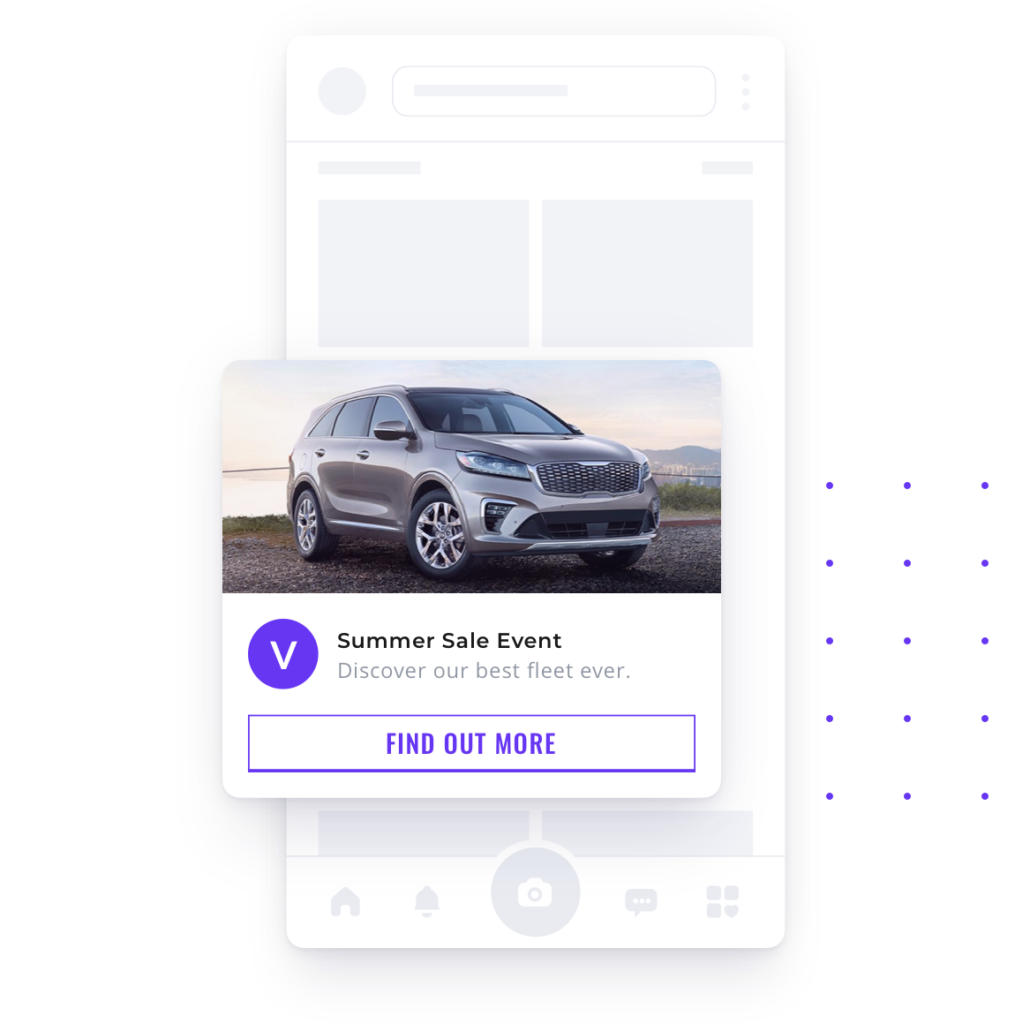
Content Recommendations
These ad units are also known as content discovery ads or content recommendation widgets. In most of the cases, such ads can be found along the bottom of a given publisher site, cleverly imitating real referrals from a webpage. The widgets are typically labelled as “recommended for you”, “you may like”, “you might have missed” or “from around the web”.
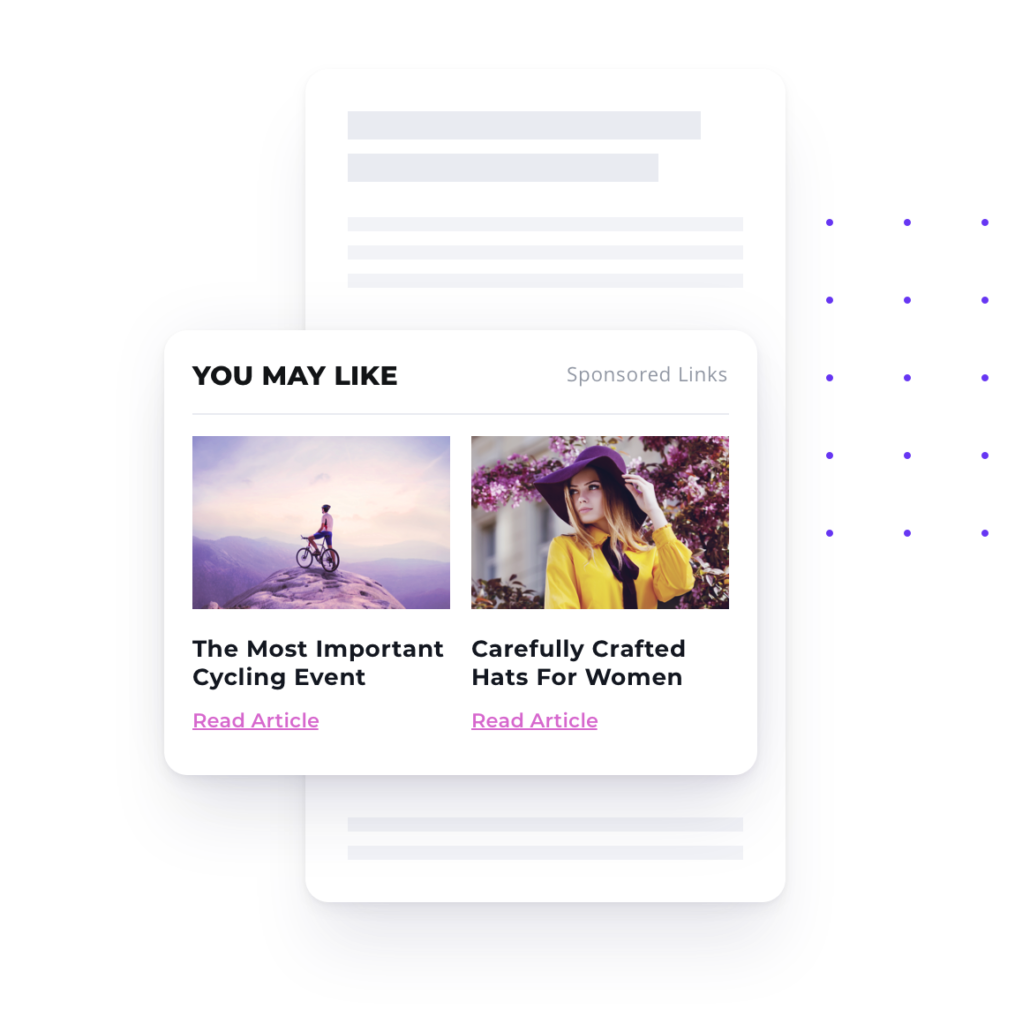
Sponsored Ads
Sponsored ads (or Paid Branded, Sponsored/Custom Content) are usually produced by a publisher in the interest of the brand. For this reason, the content itself is a part of the native ad buy and can be promoted by in-feed or content discovery ads. You probably have seen some examples of sponsored content in the New York Times, Business Insider or other famous news portals.
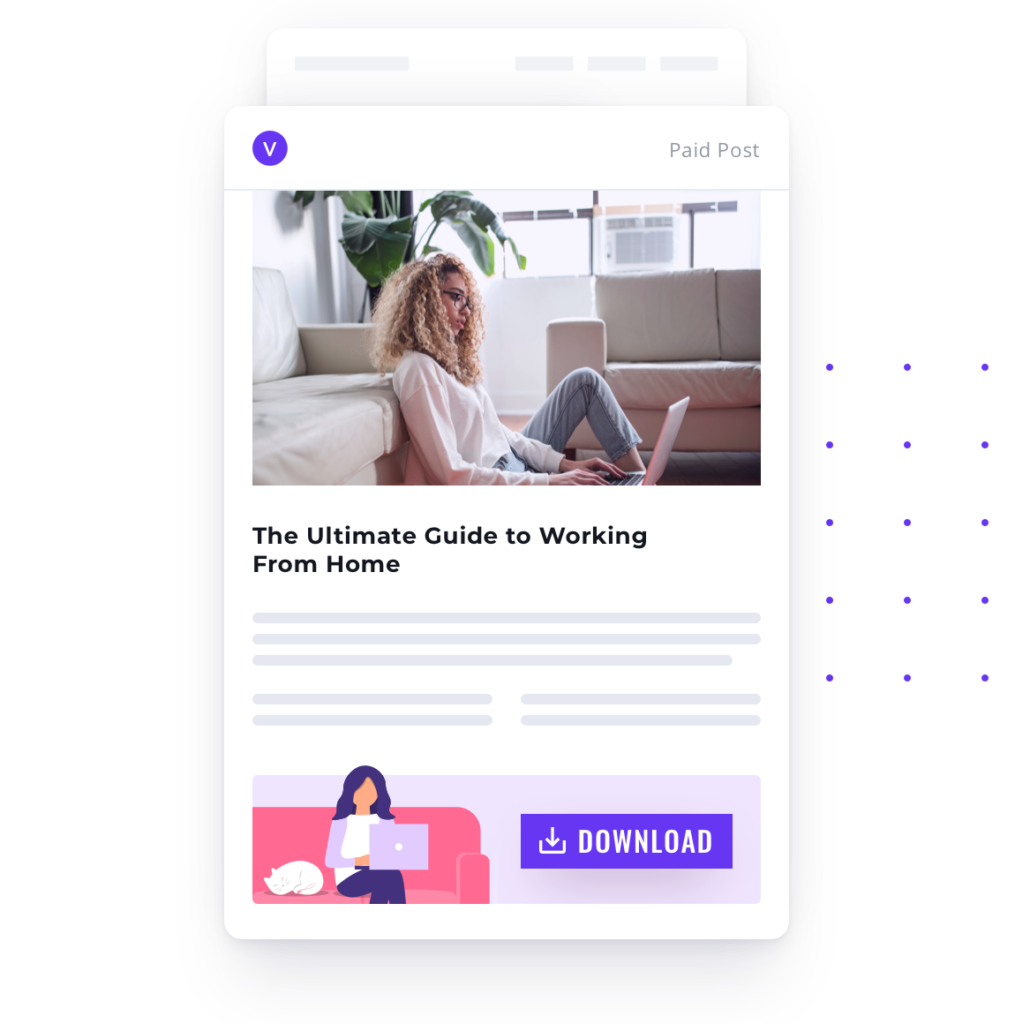
Email Widgets
Email Widgets integrate flawlessly into the content promoted by the publisher’s email newsletters. It’s worth noting that this native ad format eliminates impression waste, as the ad is served only when a consumer opens the email. Not to mention that email widgets have huge potential to go viral, as users can interact with the content in the message, save it, or forward to friends or relatives.
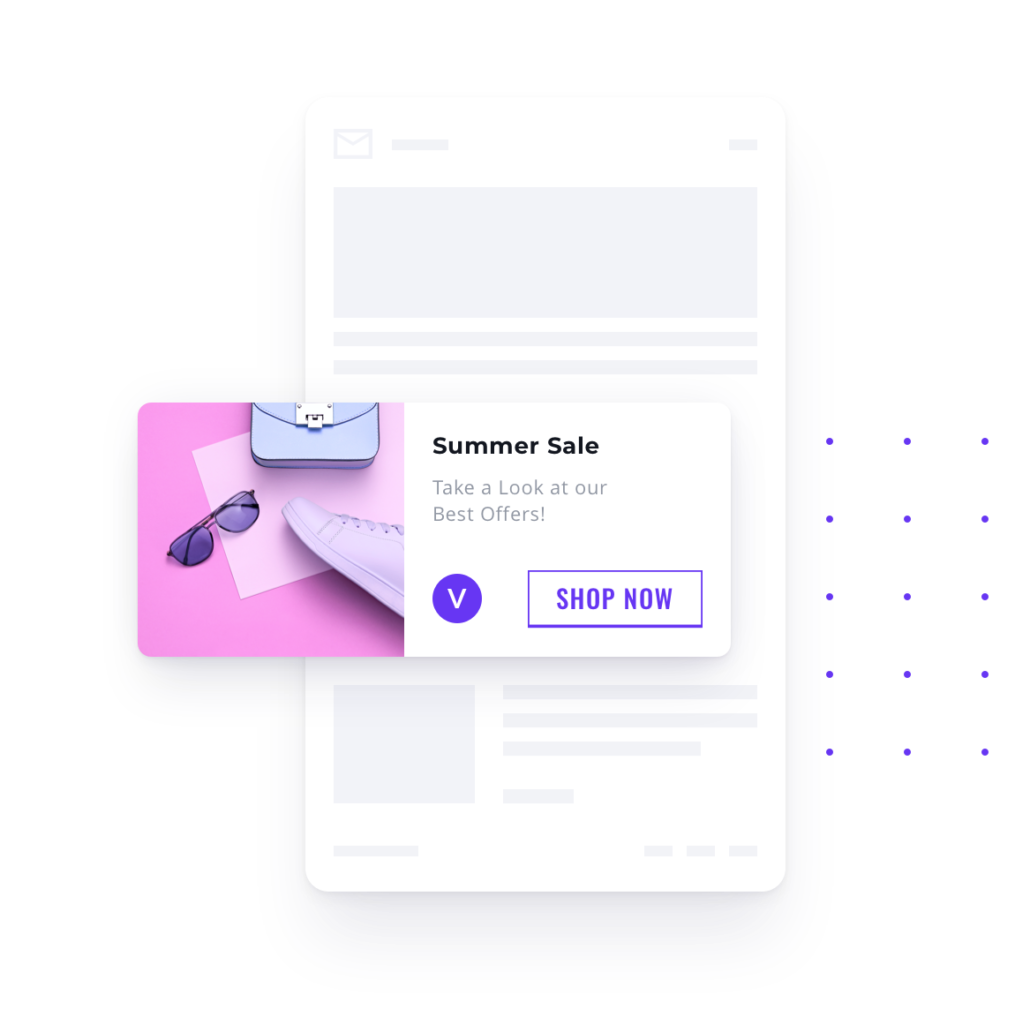
What are the Best Native Ad Networks?
Before you jump in the first native ad network you see in Google, you should definitely consider other advertising options out there. This list of the top native ad networks will definitely come in handy.
Taboola
Taboola has been around since 2007 and has become the largest discovery and the world’s leading native advertising network. This platform reaches 44.5% of the entire internet population globally, and also 87% of mobiles that have internet access in the United States. It’s the right choice if you want your content to be displayed on MSN, Business Insider, USA Today or Bloomberg.
Traffic type: 99% web, 2% in-app
Available ad formats: in-feed ads, content recommendations
GEO targeting: tier 1 geos like US, UK, JP or FR and many more
Top verticals: e-commerce, business, health & beauty, technology
Outbrain
Another powerhouse in native advertising is Outbrain. This platform was launched in 2006, which makes it one of the first ones around. By teaming up with many leading niches and top publishers, Outbrain’s users can show their ads to high-quality audiences across well-known media websites such as People, Elle, The Guardian or The Washington Post.
Traffic type: web
Available ad formats: in-feed ads, recommended content, content widgets, search and promoted listings
GEO targeting: 50% of Outbrain’s traffic comes from Tier 1 geos like US, UK, JP, and FR
Top verticals: e-commerce, health, finance, automotive, technology & computing
Revcontent
Even though Revcontent is not as large as Taboola or Outbrain, the platform is growing remarkably fast. This ad network has a reach of over 250 billion content recommendations per month. Not to mention that their publishing websites reach 97% of households in the United States. Among its top publishers are Forbes, Nasdaq, Wayfair or USA Today.
Traffic type: web
Available ad formats: in-feed ads, content recommendations
GEO targeting: 50%+ premium US traffic, large audiences in CA, NZ, AU, UK, PT, ZA, DE, BR, FR and many more
Top verticals: e-commerce, health & beauty, finance
MGID
MGID is a global award-winning innovative pioneer in native advertising. Founded in 2008, the company holds the largest share of traffic within the European region. Today, the platform offers a traffic inventory of 165 billion recommendations monthly. Their top publishing websites include IBT, Metro, Medical Daily, The Inquisitr or MSN.
Traffic type: recommended content
Available ad formats: web
GEO targeting: Europe, the USA, Asia-Pacific and more
Top verticals: health & beauty, dating, travel, binary, education, real estate, automotive
Which Pricing Model is Better For Native Ads: CPC or CPM?
Let’s start with some basic definitions. Both CPM and CPC are payment options that define how much money you are going to spend and what you will get for it. CPC (Cost Per Click) is an advertising model where advertisers only pay whenever an ad is clicked on. Whereas the CPM (Cost Per Mille) model is where advertisers pay for a thousand impressions, so every time an ad loads on a page or in an application.
When deciding between CPM vs CPC, you should first consider all the pros and cons of each pricing model and estimate which one would suit your needs and goals more precisely. The right choice may bring you more profit for a fairly lower price.
Generally, CPM is the best option if you want to drive brand awareness and engagement. What’s more, it provides a great opportunity to test targeting strategies by choosing specific websites and measuring CTR while paying the same price for each campaign. CPC is a good choice if you want to drive sales, as well as retargeting campaigns.
Agencies, brands and digital advertisers running native ads typically aim for either performance or brand-awareness and choose the CPM model. Why? Simply, because if you’re paying by CPM, it’s quite easy to get a high ROI, particularly when you find your best-performing creative sets. With each click on your ad, your offer is getting more popular while your cost per thousand impressions remains the same or even goes down. With the CPC model a good creative set sometimes turns negative ROI because of the fact that the more clicks, the higher the cost is.
What Native Advertising Best Practices are the Most Effective?
If you’re just getting started with native advertising, here are some of the best practices to help you create and implement successful ad campaigns:
- Know Your Audience – when it comes to native advertising, content is king. That’s why it’s crucial to get to know your niche, create a demographic and behavioral profile and ensure that all ad elements are appealing. What problems are they trying to solve? What type of content would they value most? Find the answers to these questions.
- Know Your Goals – set specific goals for what you want to achieve. Typical goals include generating leads, getting more sales, boosting website traffic, or increasing brand visibility. You can also think of your objectives as performance goals that use content to drive conversions or awareness goals that look at how many people view your content and how long they spend doing so.
- Focus on Added Value – give users something interesting to read, look at or experience, and make sure it’s related to the page or app they’re visiting. If you do that, you’ll add value to their experience. Remember that 61% of consumers agree that if the advertising message is good, they don’t care if it’s sponsored by a brand.
- Be Creative – remember that you and your competitor get the same amount of pixels for an ad. What differentiates you from others is your creativity. Think of some tweaks you could use to grab attention. It’s definitely worth experimenting with various combinations to discover what works best for your target audience.
- Update Frequently – add at least a few more image and headline variations every couple of days. There is a strong correlation between regularly refreshing ads and performance. Not to mention that you shouldn’t have a creative run longer than three months.
- Test, Test, Test – check data daily, especially at the start, so you can experiment if things aren’t working out the way you want. Besides, consider split testing or utilizing whitelists and blacklists to discover the top-converting segments and placements.
What is the Future of Native Advertising?
Back in 2014, native advertising was recognized as the newest form of advertising by the Advertising Bureau. Since then, native ads have been growing at the speed of light.
Analysis of overall digital ad spend growth, combined with native advertising trends per market, globally, has revealed that native advertising spend is expected to increase by 372% from 2020 to 2025. This represents an increase in the native advertising market from $85.83 billion in 2020 to a total global value of $402 billion by 2025. You heard it right – it’s pretty amazing.
Essential to the growth is the increasing popularity of the in-feed native ad format, which will continue to develop over the coming years with programmatic native and wider use of outstream native video advertising formats.
If you want to discover what trends will have the biggest impact on native advertising in 2021, check out one of our latest blog posts with some expert tips and recommendations.
Summary
Now you know the what, why and how of native advertising. It’s definitely not rocket science, but to make the most of it, you need to consider its features, set clear goals, and be ready to do a lot of testing, analysis and optimization. With our support you’ll have the tools and knowledge you need to ensure success! Do you have more questions?

